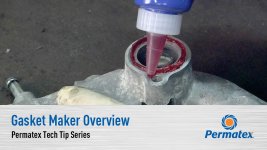1. Well you need to remove the oil filler cap to pour oil in, so why is it such a pain to remove a hose that would not even need to be secured tight?
2. Yes, the can is for the escaped oil if it came through. I've got a customer vehicle that has 400k miles and has lots of blow-by. He has not catched anything in the can during first two years of heavy everyday work truck use.
Your last sentence quoted here doesn't make any sense. In the first place, if your engine has so much crankcase pressure that you need to start to make this kind of improvements to the engine then to me it is just dodging the facts that the engine needs a rebuild. When a 12V is in good shape and form, it does not need any of this crap unless it's a race engine.
This ugly gizmo here and the way I've done it are just two different ways of prolonging a life of a tired engine, attacking the same basic problem. Another question, why is it better to burn this escaped engine oil than catching it?
1 I don't normally install a radiator style hose that fits loosely over the pipe so when I put a hose on it doesn't just slid back off, but I now understand what your doing although it won't work on my truck. During the conversion to simplify the top rad hose install we eliminated the front fill.
2 You simply stated installing a hose and catch can without saying how well the hose worked at keeping oil out of the catch can.
3 Talk about not making since, Rather than installing my vented valve covers and plugging the factory vent I should have rebuilt my old engine but it's ok for you to install a hose vent and catch can on a customers 400k mile engine with lots of blowby.
My old engine did not have lots of blowby but it was loosing some oil out the factory vent tube (something nearly every 12v owner complains about). I installed the vented vc's to see if it would slow down the oil lose. The vc's took care of the oil lose out the vent but didn't effect the nearly 400 mile per qrt of oil consumption, when the head gasket started leaking I decided rather than patch it I'd do a full rebuild.
Lastly, I never called your setup ugly, I only questioned removing the hose to add oil and the reason for the catch can.
You called my setup ugly as hell (your opinion).
Also who's burning escaped oil?
The baffling in the vented covers does a excellent job of separating the oil from the vented gases returning it to the oil pan where it's needed.
Don't let the photo of the pretty engine fool you, this Cummins powered Ford earns it's keep.
^ 25k lbs gross^
^31k lbs gross^
^Work truck engine^
Now I don't think you can argue that this beats the h--- out of a 6.0





